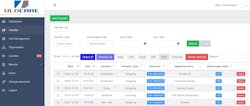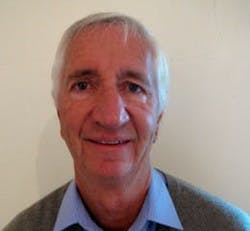ULD: The Oil that Keeps the Gears of Air Cargo Turning
We are already well into the sixth decade of unitized air cargo operations, and just like other transport industries, the day-to-day operation of air cargo are totally dependent on having readily available unit load device (ULD) equipment at the right place at the right time.
And when things are running smoothly, this is all very much taken for granted by the multiple players along the air cargo ecosystem, but is this the end of the story?
As is common these days, we turned to artificial intelligence (AI) asking the question: Describe in 100 words or less the top challenge facing a ULD manager in their day-to-day job of running ULD operations. A couple of seconds later, we get the response:
“The top challenge facing a ULD manager in their day-to-day job of running ULD operations is optimizing ULD utilization and availability. It involves efficiently allocating ULDs to meet flight demands, cargo volumes and aircraft compatibility while adhering to weight and balance restrictions. Balancing these factors can be complex, requiring coordination with multiple stakeholders and accurate forecasting. ULD managers must possess strong organizational and analytical skills to ensure the right ULDs are available at the right time and place, maximizing cargo capacity and operational efficiency. Addressing this challenge contributes to the smooth flow of cargo and reduces costs in logistics operations.”
As a trade association dedicated to the interests of the ULD community, ULD CARE continuously seeks to apply its resources to addressing such challenges. And front and center of such initiatives is the newly released ULD CARE Digital ULD Control Receipt, or E-UCR.
To those not familiar with the intricacies of ULD operational management, this may seem like just another airline industry acronym. But actually, the UCR is one of the foundations of effective ULD management as it is the document used to record the transfer of a ULD asset between parties as it moves along the air cargo chain from shipper to consignee, passing through a significant number of different parties along the way.
The UCR is an International Air Transport Association (IATA) recommended practice (RP), issued way back in the 1970s when ULD very rarely moved off airport and when controlling these assets was a great deal easier. Today, a very significant amount of air cargo operations takes place off airport in the premises of freight forwarders and shippers/consignees. ULD can even find themselves hundreds of miles away from an airport.
Extensive research carried out by ULD CARE during 2021 and 2022 reveals that, at any one time, around 10 percent of an airline’s ULD – particularly pallets – will be off airport and that a large proportion of these units will not be returned in a timely fashion.
A major factor enabling this situation lies in the use of paper and pencil processes to record the transfer of the ULD from a cargo terminal to a freight forwarder’s truck and the subsequent delays and inaccuracies in providing that information back to the airline’s ULD management team.
It is this shortcoming that ULD CARE seeks to address through the creation of a modern digital electronic UCR, running as an app on both iOS and Android, or for that matter on an in-house system and feeding the information in real time to all related parties: the airline, the freight forwarder and the cargo terminal via an online platform.
This industry solution is a win-win situation for all players, as the efficient utilization of the world’s roughly 1 million ULD assets can only benefit the entire industry. It is only a couple of years since, during the COVID-related surge in air cargo demand, that everybody suffered from ULD asset shortages. The solution then by the airlines was to simply go out and purchase or rent more and more equipment as a Band-Aid solution, which provided some short-term relief but, of course, at significant cost to the airlines. No sign of efficiency or sustainability there.
ULD CARE considers itself well qualified to be undertaking this project, as for the past five decades it has operated the interline ULD user group system (IULDUG), a platform that provides its member airlines with real-time information of ULD assets transferred between themselves in the course of interlining. It is therefore not a huge leap to expand this capability to include transfers between the airline’s agents (cargo terminals) and off-airport agents.
Furthermore, digitization is absolutely at the forefront of any discussion about air cargo operations. Actually, from about five or six years ago, we started to see some interesting initiatives bringing tagging of ULD into the discussion and we even saw the term “Smart ULD” entering the air cargo lexicon.
However, the rollout of such systems has not been as fast as hoped and the need to not only fit tags to very large numbers of ULD but also establish a widespread network of readers remains a significant challenge to the industry.
Drilling down on the AI response to our question – “Balancing these factors can be complex, requiring coordination with multiple stakeholders and accurate forecasting.” A key component of achieving such balance is having real-time accurate information 24/7, and this is where the E-UCR comes into the picture. And it is not unreasonable to expect that when a costly and operationally essential piece of equipment is transferred from one party to another, that there be a digital record of the transfer.
ULD CARE operates as a not-for-profit trade association for this very specialist segment of the air cargo industry and has the ambition to operate this expanded system along its traditional community lines providing the service on an affordable cost-plus basis to its members.
Furthermore, beyond digitalizing the basic ULD transfer information, there are very significant opportunities to bring efficiencies to the entire ULD operational workspace, enabling airlines to take control of not only their ULD but also accessories such as pallet nets, cargo straps and fire containment covers – the vast proportion of which are treated in an extremely wasteful manner, requiring airlines to continuously replace losses with new nets, straps and covers.
Then there is the sustainability angle, which cannot be ignored by any participants in the air cargo industry. And when it comes to the use of ULD across the industry, there is a staggering amount of unnecessary waste which is not appropriate in today's world – and is not sustainable in the long term.
As ULD CARE enters 2024, we have the technology ready to go. We have successfully conducted real-time live trials with a couple of major airlines, and are in discussion with a number of cargo terminal operators.
The use of paper and pencil recording of ULD transfers is long overdue for a digital rebirth. The only question is if not now, then when? Digitization is an irreversible trend, ULD operations cannot afford to be left behind.
Bob Rogers has spent most of his working life in Asia Pacific, resident in Hong Kong and for many years running the Asia Pacific operation of Nordisk Aviation Products. Mostly retired from a demanding “day job” these days he remains actively involved in promoting and supporting a wider understanding of ULD through his involvement with IATA and ULD CARE.
About the Author

Bob Rogers
Bob Rogers has spent most of his working life in Asia Pacific, resident in Hong Kong and for many years running the Asia Pacific operation of Nordisk Aviation Products. Mostly retired from a demanding “ day job” these days he remains actively involved in promoting and supporting a wider understanding of ULD through his involvement with IATA and ULD CARE.

